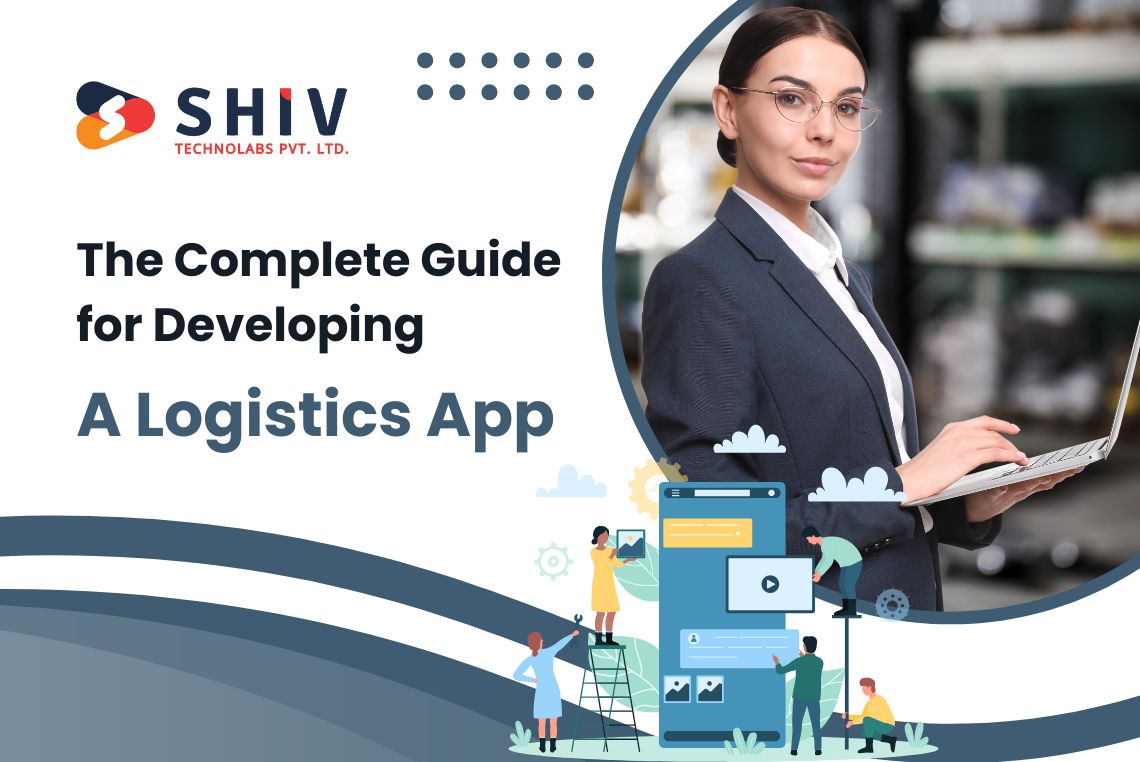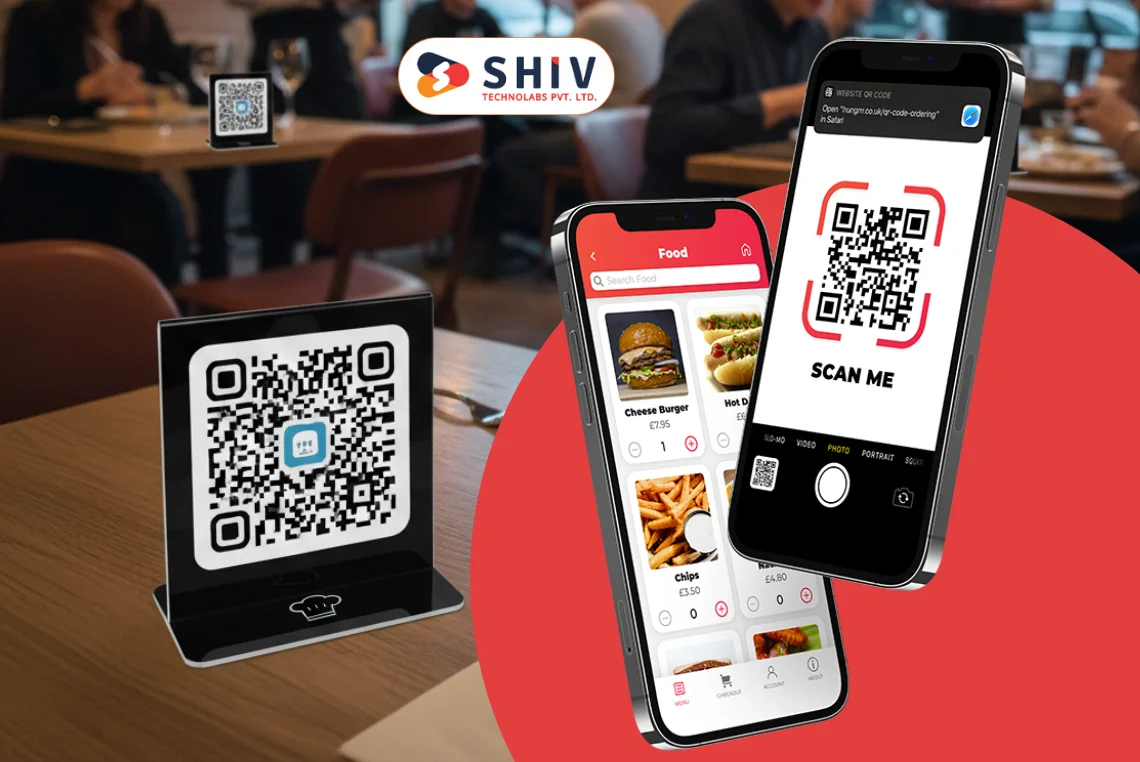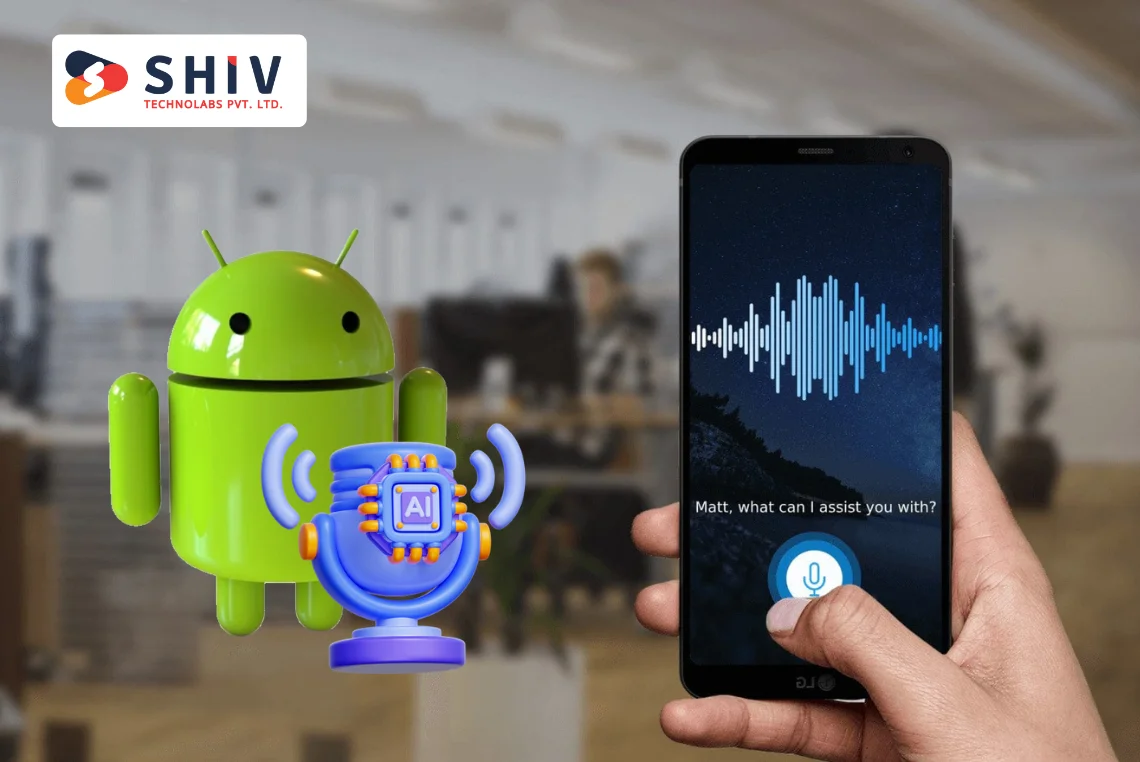Table of Contents
In the modern business world, achieving efficiency and accessing real-time data are essential. Logistics, a critical component of supply chain management, ensures the smooth movement of goods. With increasing complexity and globalization in logistics, businesses are turning to technology to improve operations and service delivery. Mobile app development offers a key solution for this challenge. Developing a logistics app is an effective way to leverage technology for streamlining processes and enhancing performance. This guide will outline the necessity of such apps, identify which businesses can benefit, and detail the essential features to include.
What is the Need to Create an App for Logistics?
The logistics sector faces various challenges that a well-designed app can address effectively. Here’s why a logistics app is becoming an essential tool:
- Increased Efficiency: Traditional logistics operations often involve manual tasks that are time-consuming and prone to errors. An app can automate many of these tasks, such as route planning, inventory management, and shipment tracking, leading to more efficient operations.
- Real-Time Tracking and Visibility: A major benefit of logistics apps is the ability to offer real-time tracking of shipments and inventory. This transparency allows both businesses and customers to monitor the status of deliveries and make informed decisions.
- Cost Reduction: Automation and improved route planning help cut operational costs. Efficient route management reduces fuel and labor costs, while automated inventory systems help prevent issues like overstocking or running out of stock.
- Improved Customer Experience: Modern consumers expect timely updates and smooth interactions. A logistics app can provide real-time delivery updates, tracking information, and easy communication options, leading to greater customer satisfaction.
- Data-Driven Decisions: Logistics apps gather valuable data that can be analyzed for insights into performance. Businesses can use this information to identify trends, predict demand, and make informed decisions to refine their logistics strategies.
- Scalability: As businesses grow, their logistics needs can become more complex. A well-designed app can adapt to increased volumes and new features, accommodating the growing demands of the business.
Businesses That Benefit From Logistics App Development
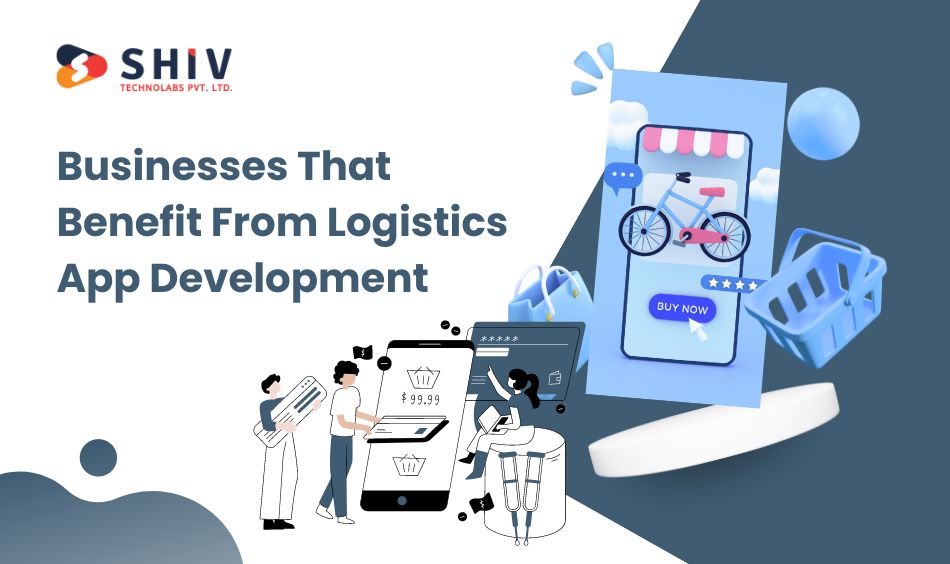
Various types of businesses can take advantage of logistics apps to improve their operations. Here’s a look at some key sectors that see substantial benefits:
- E-commerce Companies: E-commerce businesses depend heavily on efficient logistics to ensure timely deliveries. A logistics app assists with managing orders, tracking shipments, and planning delivery routes, improving customer satisfaction and operational efficiency.
- Retailers: Retail businesses need to manage inventory and ensure timely restocking. Logistics apps help in tracking inventory levels, managing warehouse operations, and coordinating with suppliers to keep the supply chain moving smoothly.
- Manufacturers: Manufacturers handle complex supply chains involving raw materials and finished products. A logistics app aids in managing material flows, coordinating with suppliers, and maintaining production schedules.
- Third-Party Logistics (3PL) Providers: 3PL providers manage logistics for multiple clients. An app helps these companies handle different clients’ needs efficiently, manage shipments, track deliveries, and provide detailed reports.
- Healthcare Providers: Timely delivery of medical supplies and pharmaceuticals is critical in healthcare. A logistics app helps manage the distribution of medical products, ensures compliance with regulations, and tracks shipments to prevent delays.
- Food and Beverage Industry: The food and beverage sector requires precise temperature control and timely deliveries. Logistics apps can handle inventory management, shipment tracking, and ensure that perishable goods are transported under optimal conditions.
- Transportation and Freight Companies: Transportation and freight businesses benefit from logistics apps through improved route planning, fleet management, and real-time tracking of freight. This leads to better service delivery and more efficient cost management.
Also read : How to Optimize Mobile Apps for Better Performance
What are the Basic Features of Logistics App Development?
To create an effective logistics app, including essential features is crucial. Here’s a list of fundamental features that should be part of the app:
- Real-Time Tracking: This core feature allows users to monitor the location and status of shipments and inventory at any time, providing transparency and reducing uncertainty.
- Route Planning: Efficient route planning helps minimize delivery times and fuel costs. The app should include tools to calculate the best routes considering factors such as traffic, distance, and delivery windows.
- Inventory Management: Managing inventory levels is essential for smooth operations. The app should provide functionalities to track stock levels, manage orders, and monitor warehouse activities.
- Order Management: The app should support the complete order process, from receiving orders to dispatching them. Features like order tracking, status updates, and notifications help manage this process effectively.
- Delivery Scheduling: Scheduling deliveries, assigning tasks to drivers, and managing delivery windows are crucial. The app should include features to coordinate these aspects and ensure timely deliveries.
- User Management: Different user roles and permissions should be supported by the app. This includes roles such as drivers, warehouse staff, and managers, allowing administrators to manage access and activities.
- Analytics and Reporting: Analytics and reporting features provide insights into performance metrics, delivery times, and operational efficiency. This data helps businesses make informed decisions and improve their logistics operations.
- Integration Capabilities: The app should integrate with other systems such as ERP (Enterprise Resource Planning), CRM (Customer Relationship Management), and accounting software for smooth data flow and coordination.
- Communication Tools: Effective communication between stakeholders is vital. The app should include messaging, notifications, and alerts to facilitate communication between customers, drivers, and logistics managers.
- Compliance and Security: Protecting data and ensuring compliance with regulations are important. The app should have security features such as encryption, user authentication, and data backup to protect sensitive information.
How to Make a Logistics App Innovative?
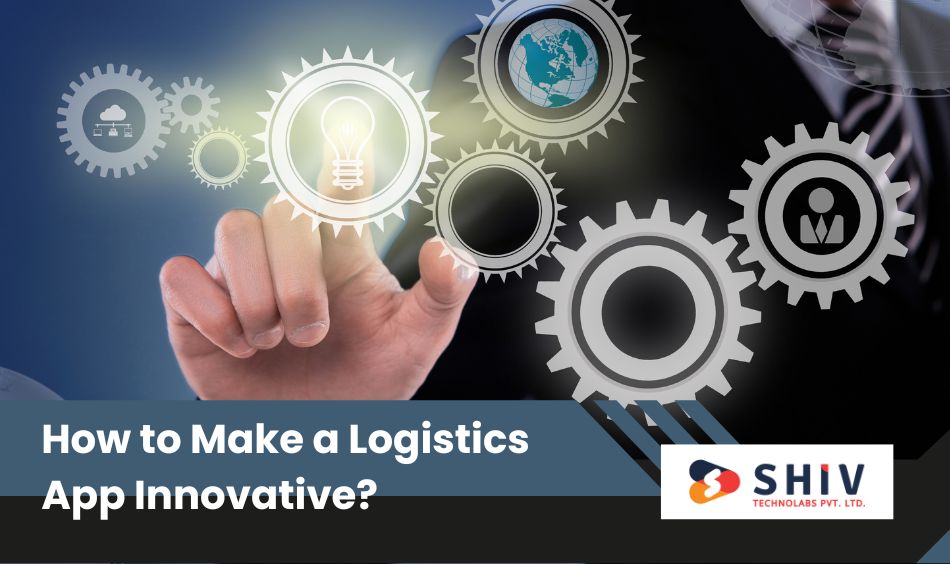
Creating a logistics app that stands out requires incorporating features and technologies that go beyond the basics. Here are some strategies to make your logistics app innovative:
- Integrate Advanced Technologies: Utilize cutting-edge technologies such as artificial intelligence (AI) and machine learning (ML) to predict demand, automate route planning, and enhance decision-making. AI can help optimize logistics operations by analyzing large sets of data to identify patterns and suggest improvements.
- Incorporate Internet of Things (IoT): Implement IoT sensors to track the condition and location of shipments in real-time. IoT devices can monitor factors like temperature, humidity, and shock, providing valuable data to ensure that goods are transported under optimal conditions.
- Leverage Big Data Analytics: Use big data analytics to gain insights into logistics operations. By analyzing large volumes of data, you can uncover trends, forecast demand, and make data-driven decisions that improve efficiency and reduce costs.
- Enhance User Experience (UX): Focus on creating an intuitive and user-friendly interface. A well-designed UX ensures that users can easily access and interact with the app’s features, leading to higher adoption rates and user satisfaction.
- Implement Blockchain Technology: Blockchain can provide secure and transparent record-keeping for transactions and shipments. This technology helps in tracking the provenance of goods and ensures that data remains tamper-proof and accessible to authorized parties only.
- Introduce Real-Time Communication Features: Enable real-time communication between all stakeholders, including drivers, warehouse staff, and customers. Features like instant messaging, notifications, and alerts facilitate quick updates and issue resolution.
- Adopt Cloud Technology: Use cloud-based solutions for data storage and processing. Cloud technology offers scalability, flexibility, and accessibility, allowing you to manage logistics operations from anywhere and at any time.
- Focus on Sustainability: Incorporate features that support environmentally friendly practices. For instance, tools that help in planning eco-friendly routes, tracking fuel consumption, and managing waste can appeal to businesses committed to sustainability.
- Offer Customization Options: Allow users to customize features and settings according to their specific needs. Providing options for personalized dashboards, reports, and notifications can make the app more valuable to different users.
- Integrate Augmented Reality (AR): Utilize AR for applications such as warehouse management. AR can assist in locating items quickly, optimizing warehouse layout, and providing visual instructions for tasks.
Also read : Top 10 Android App Development Frameworks: Best Options in 2024
What are the Steps to Follow for Logistics App Development?
Developing a logistics app involves a series of structured steps to ensure the final product meets user needs and operates effectively. Here’s a detailed guide to the steps involved:
1) Define Objectives and Requirements:
- Set Clear Goals: Define the primary objectives of the app. For example, determine whether the focus is on improving delivery efficiency, enhancing real-time tracking, or automating inventory management.
- Gather Requirements: Engage with key stakeholders such as logistics managers, warehouse staff, drivers, and customers to collect detailed requirements. Document specific needs and expectations to guide the development process.
2) Conduct Market Research:
- Analyze the Market: Research existing logistics apps to understand their features, user experiences, and market positioning. Identify successful features and areas where competitors fall short.
- Identify Target Audience: Determine the demographics and needs of your target users. Understanding their pain points and preferences will help tailor the app to their needs.
3) Design the App:
- Create Wireframes: Develop wireframes to outline the app’s layout and user interface. These basic sketches help visualize the app’s structure and functionality before detailed design begins.
- Develop Prototypes: Build interactive prototypes that simulate the user experience. Prototypes allow for early feedback and adjustments before the full-scale development starts.
- Focus on UX/UI Design: Design an intuitive and engaging user interface. Pay attention to usability principles to ensure that the app is easy to navigate and visually appealing.
4) Choose the Technology Stack:
- Select Development Tools: Choose the programming languages, frameworks, and development tools that will be used. Common choices for logistics apps include languages like Java, Python, or Swift, and frameworks such as React Native or Flutter.
- Decide on Platforms: Determine whether the app will be developed for iOS, Android, or both. Consider cross-platform development options if you aim to reach a wider audience.
5) Develop Core Features:
- Build the Backend: Develop the server-side infrastructure to handle data processing, storage, and integration with other systems. This includes setting up databases, APIs, and server management.
- Implement Key Functionalities: Code the essential features such as real-time tracking, route optimization, inventory management, and order processing. Ensure these functionalities are integrated seamlessly.
- Incorporate Security Measures: Implement security protocols to protect user data and ensure compliance with data protection regulations. This includes encryption, authentication, and secure data storage.
6) Test the App:
- Conduct Unit Testing: Test individual components and functions to ensure they work as expected. Unit tests help identify and fix issues at an early stage.
- Perform Integration Testing: Test the integration of various components and systems to ensure that they work together smoothly. This includes testing APIs and third-party integrations.
- Run User Acceptance Testing (UAT): Engage a group of end-users to test the app in real-world scenarios. Gather feedback on usability, performance, and functionality.
- Address Bugs and Issues: Based on testing feedback, fix any identified bugs or issues. Conduct regression testing to ensure that fixes do not introduce new problems.
7) Prepare for Launch:
- Develop a Launch Plan: Create a comprehensive launch strategy that includes marketing, user onboarding, and support. Prepare promotional materials and plan communication channels to announce the app’s release.
- Set Up App Store Listings: Prepare and submit the app to app stores such as Google Play and the Apple App Store. Ensure that app store listings are complete with descriptions, screenshots, and other required information.
- Prepare Documentation: Create user guides, FAQs, and other documentation to help users understand and navigate the app.
8) Launch the App:
- Release the App: Launch the app on the selected platforms. Monitor the initial performance and address any immediate issues that arise post-launch.
- Monitor User Feedback: Track user reviews, feedback, and support requests. Respond to user concerns and make any necessary adjustments to improve the app.
9) Monitor and Maintain the App:
- Track Performance Metrics: Use analytics tools to monitor key performance indicators such as user engagement, app stability, and feature usage. Analyze data to identify areas for improvement.
- Provide Regular Updates: Release updates to fix bugs, enhance features, and address user feedback. Regular updates help maintain app performance and user satisfaction.
- Ensure Ongoing Support: Offer technical support to users, addressing any issues or questions they may have. Provide a reliable support system to help users resolve problems quickly.
10) Evaluate and Iterate:
- Assess Performance: Regularly evaluate the app’s performance against the initial goals and objectives. Use insights from analytics and user feedback to assess how well the app is meeting its intended purpose.
- Plan for Future Enhancements: Based on performance evaluations and user needs, plan for additional features and improvements. Consider incorporating new technologies and trends to keep the app current and competitive.
11) Engage with Users:
- Solicit User Feedback: Continuously engage with users to gather feedback and understand their evolving needs. Use surveys, feedback forms, and direct interactions to gather insights.
- Adapt to Market Changes: Stay informed about industry trends and technological advancements. Be prepared to adapt the app in response to changes in the logistics sector or shifts in user preferences.
Conclusion
The development of a logistics app can significantly transform how businesses manage their operations, from optimizing routes to enhancing real-time tracking. By understanding the key features and following a structured development process, companies can create an app that not only meets current needs but also adapts to future demands. Incorporating advanced technologies and focusing on user experience are essential for making your logistics app stand out in a competitive market. With careful planning, execution, and ongoing support, a logistics app can streamline operations, improve efficiency, and deliver a superior user experience.
When it comes to creating a top-notch logistics app, partnering with experienced mobile app developers can make all the difference. At Shiv Technolabs, we specialize in developing innovative and user-friendly logistics solutions tailored to your specific needs. Our team of skilled iOS app developers and Android app developers combines cutting-edge technology with industry expertise to deliver high-quality apps that drive efficiency and enhance operational performance. Whether you’re looking to optimize your supply chain, improve real-time tracking, or integrate advanced features, Shiv Technolabs is here to help. Contact us today to discover how our mobile app developers can bring your logistics app vision to life and set your business on the path to success.

